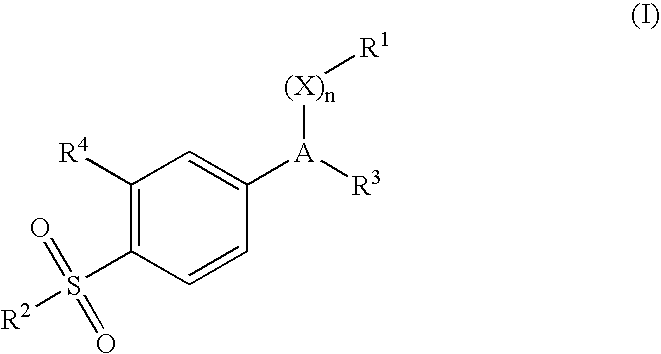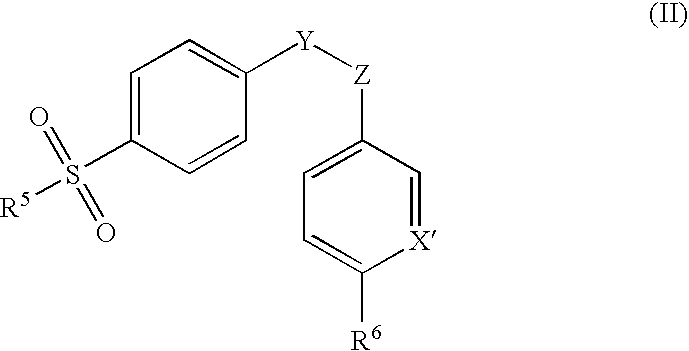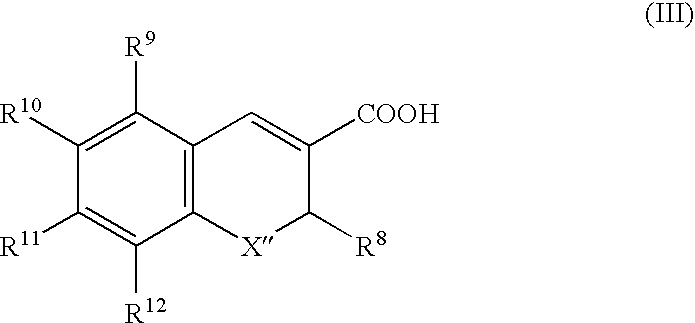Cyclooxygenase-2 inhibitor and antibacterial agent combination for intramammary treatment of mastitis
a mastitis and cyclooxygenase inhibitor technology, applied in the direction of antibacterial agents, drug compositions, biocides, etc., can solve the problems of insufficient relief of symptoms, inability to completely resolve problems, and inability to treat mastitis with an antibacterial agent alone, etc., to achieve short milkout time, minimal to no irritation, and effective pain treatment
- Summary
- Abstract
- Description
- Claims
- Application Information
AI Technical Summary
Benefits of technology
Problems solved by technology
Method used
Image
Examples
example 1
[0094]An antibacterial suspension to be administered by intramammary infusion is prepared having the following composition:
ceftiofur hydrochloride (micronized)12.5 mg / ml Labrafil ™ M-1944CS200 mg / mlmicrocrystalline wax NF100 mg / mlcottonseed oil NFq.s.
[0095]The microcrystalline wax and cottonseed oil are heated to 85-98° C. with mixing, in a manufacturing tank. After the microcrystalline wax is completely melted, the mixture is cooled to 38-45° C. and the Labrafil™ M-1944CS is added to the manufacturing tank with mixing to form the vehicle. Ceftiofur hydrochloride is added to the resulting vehicle and mixed to form a uniform suspension. The suspension is screened and filled into 12 ml high density polyethylene mastitis syringes. The packaged product is terminally sterilized by gamma irradiation at a dose of 25-40 kGy.
[0096]A selective COX-2 inhibitor suspension to be administered by intramammary infusion is prepared having the following composition:
example 2
[0099]A suspension to be administered by intramammary infusion is prepared having the following composition:
ceftiofur crystalline free acid (micronized) 25 mg / mlderacoxib170 mg / mlLabrafil ™ M-1966CS100 mg / mlmicrocrystalline wax NF 50 mg / mlcorn oil NFq.s.
[0100]The microcrystalline wax and the corn oil are heated to 85-98° C. with mixing, in a manufacturing tank. After the microcrystalline wax is completely melted, the mixture is cooled to 30-45° C. and the Labrafil™ M-1966CS is added to the manufacturing tank with mixing to form a vehicle. The ceftiofur crystalline free acid and the deracoxib are added to the vehicle and mixed to form a uniform suspension. The suspension is screened and filled into 12 ml high density polyethylene mastitis syringes. The packaged product is terminally sterilized by gamma irradiation at a dose of 25-40 kGy.
[0101]The above suspension is administered to all four quarters an udder of a dry cow at a dose of 500 mg ceftiofur crystalline free acid / quarter and...
example 3
[0102]A suspension to be administered by intramammary infusion is prepared having the following composition:
ceftiofur hydrochloride (micronized)50 mg / mlderacoxib300 mg / ml Labrafil ™ M-1944CS50 mg / mlmicrocrystalline wax NF70 mg / mlcottonseed oil NFq.s.
[0103]The microcrystalline wax and approximately 27% of the total amount of the cottonseed oil are heated to 85-98° C. with mixing, in a kettle. The balance of the cottonseed oil is heated to 85-98° C. with mixing, in a manufacturing tank. After the microcrystalline wax is completely melted, the microcrystalline wax / cottonseed oil mixture in the kettle is transferred to the manufacturing tank containing cottonseed oil and mixed thoroughly. The resulting mixture is cooled to 38-45° C. and the Labrafil™ M-1944CS is added to the manufacturing tank with mixing to form the vehicle. The ceftiofur hydrochloride and deracoxib are added to the resulting vehicle and mixed to form a uniform suspension. The suspension is screened and filled into 12 ...
PUM
| Property | Measurement | Unit |
|---|---|---|
| concentration | aaaaa | aaaaa |
| concentration | aaaaa | aaaaa |
| concentration | aaaaa | aaaaa |
Abstract
Description
Claims
Application Information
 Login to View More
Login to View More - R&D
- Intellectual Property
- Life Sciences
- Materials
- Tech Scout
- Unparalleled Data Quality
- Higher Quality Content
- 60% Fewer Hallucinations
Browse by: Latest US Patents, China's latest patents, Technical Efficacy Thesaurus, Application Domain, Technology Topic, Popular Technical Reports.
© 2025 PatSnap. All rights reserved.Legal|Privacy policy|Modern Slavery Act Transparency Statement|Sitemap|About US| Contact US: help@patsnap.com



